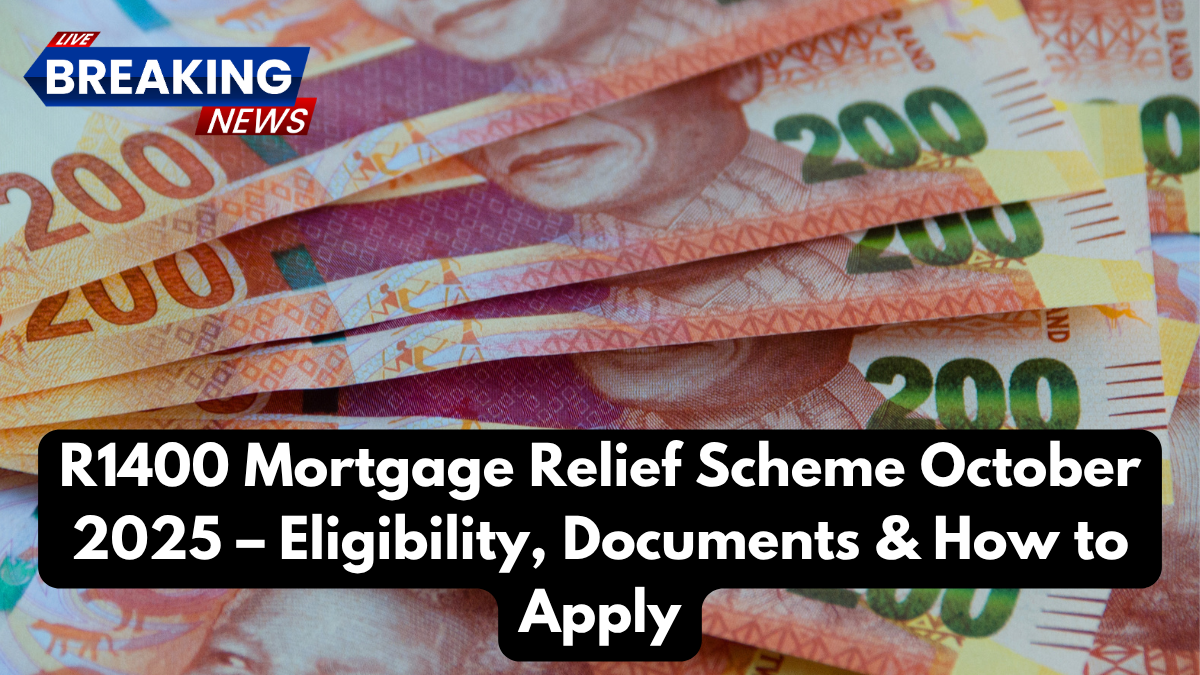The government’s mortgage relief South Africa initiative has become a crucial lifeline for homeowners facing financial challenges in 2025. With rising interest rates and inflation putting pressure on household budgets, the newly introduced R1400 housing subsidy aims to support low- and middle-income families struggling to meet their mortgage repayments. The initiative provides financial relief of up to R1400 per month to qualifying homeowners, ensuring they can maintain their homes and avoid defaulting on loans.
The mortgage relief South Africa program is part of a broader economic recovery plan to protect citizens from housing insecurity. Administered through the Department of Human Settlements in collaboration with major banks, the R1400 housing subsidy serves as a temporary yet impactful measure for families affected by the cost-of-living crisis. By offering financial assistance to eligible homeowners, the government seeks to stabilize the housing market while giving residents the support they need to stay afloat.

Purpose of the R1400 Housing Subsidy
The primary goal of the R1400 housing subsidy is to reduce the financial strain on households burdened by mortgage commitments. South Africa’s economic recovery has been uneven, with many middle-class families facing rising living costs. The mortgage relief South Africa scheme ensures these citizens can sustain their homeownership and avoid repossession.
Key objectives of the program include:
- Providing short-term relief for struggling homeowners
- Preventing foreclosures and housing displacement
- Stabilizing the banking and mortgage sectors
- Supporting long-term economic resilience
This initiative aligns with the government’s 2025 social protection strategy, which emphasizes sustainable housing, income security, and inclusive economic growth.
Eligibility Criteria for the Mortgage Relief South Africa Scheme
Not all homeowners automatically qualify for the R1400 housing subsidy. Applicants must meet specific eligibility requirements to benefit from this program. The table below summarizes the main criteria and conditions for participation.
| Criteria | Description | Required Proof |
|---|---|---|
| Citizenship | Must be a South African citizen or permanent resident | ID document or proof of residence |
| Income Limit | Monthly household income not exceeding R25,000 | Recent payslips or income statement |
| Mortgage Type | Valid home loan with a registered South African bank | Loan agreement or mortgage statement |
| Payment Status | Demonstrated difficulty in meeting repayments | Bank-issued payment history |
| Ownership | Property must serve as the primary residence | Title deed or proof of address |
Meeting these requirements increases the likelihood of approval under the mortgage relief South Africa program. Applicants must also provide accurate and updated information, as false claims could lead to disqualification.
How to Apply for the R1400 Housing Subsidy
Applying for the R1400 housing subsidy is straightforward, and the process can be completed either online or through your participating financial institution. Follow these steps to submit your application efficiently:
- Visit the Department of Human Settlements website or your bank’s official portal.
- Navigate to the mortgage relief South Africa application section.
- Fill out the required personal and financial details.
- Upload the necessary documents such as ID, payslips, and mortgage proof.
- Submit the application and wait for confirmation.
Once your application has been reviewed, successful applicants will receive written confirmation detailing how the R1400 housing subsidy will be applied to their mortgage accounts. Payments are made directly to the bank to ensure transparency and proper use of funds.
Impact of the Mortgage Relief South Africa Program
The mortgage relief South Africa initiative has already had a positive effect on the housing market and the broader economy. By assisting homeowners, it prevents property repossessions and reduces household debt stress. The R1400 housing subsidy ensures that families retain stability, which in turn supports communities and local economies.
Some of the program’s most notable benefits include:
- Protection from loan default and foreclosure
- Relief from monthly mortgage burdens
- Stabilization of household finances
- Encouragement of responsible borrowing
Financial experts believe that such programs are vital in maintaining economic confidence and preventing large-scale property market downturns.
Conclusion
The mortgage relief South Africa program and its R1400 housing subsidy represent a vital safety net for homeowners navigating financial difficulties in October 2025. By offering targeted support to those most in need, the government continues to prioritize housing security as part of its national recovery plan. Eligible applicants are encouraged to gather their documents and apply promptly to avoid missing out on this essential benefit. With proactive participation and proper documentation, South Africans can take advantage of this opportunity to safeguard their homes and secure a more stable financial future.
FAQs
What is the R1400 housing subsidy?
It is a government-provided financial assistance of up to R1400 per month to help eligible homeowners with their mortgage repayments.
Who qualifies for the mortgage relief South Africa program?
South African citizens or permanent residents with an active mortgage, earning less than R25,000 per month, and facing repayment difficulties are eligible.
How do I apply for the R1400 housing subsidy?
You can apply online via the Department of Human Settlements website or through your bank’s official application portal.
How long does the approval process take?
Processing times may vary, but most applications under the mortgage relief South Africa scheme are reviewed within 2–4 weeks.
Will the R1400 housing subsidy affect my credit score?
No, the subsidy is applied directly to your mortgage account and does not negatively impact your credit rating.
Click here to learn more